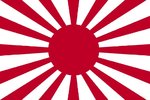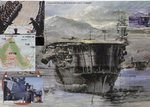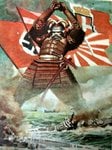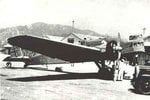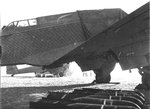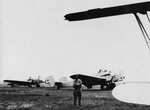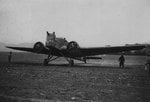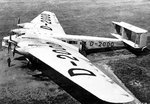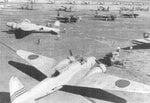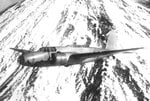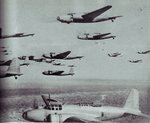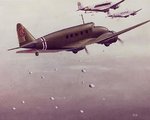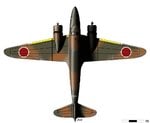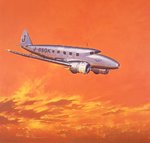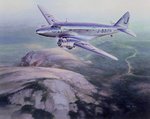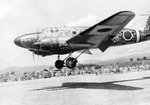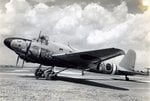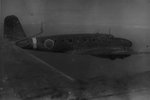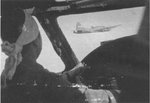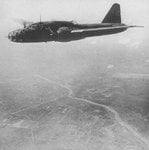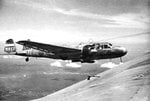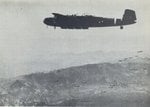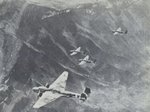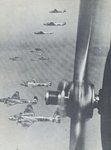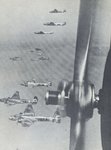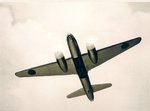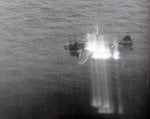The Imperial Japanese Army Air Service (IJAAF), was the land-based aviation force of the Imperial Japanese Army. As with the IJA itself, the IJAAF was developed along the lines of Imperial German Army Aviation so its primary mission was to provide tactical close air support, for ground troops while maintaining a limited air interdiction capability. The JAAF also provided important reconnaissance support for the Army. However, the Army Air Service usually did not control the light aircraft or balloons deployed and operated by the Imperial Japanese Army artillery battalions as spotters or observers. Although the Army Air Service engaged in limited strategic bombing of major Chinese cities such as Shanghai and Chongqing in the early stages of the Second Sino-Japanese War, this was not its primary mission, and it lacked the heavy strategic bombers as were later deployed by the United States Army Air Force. The Imperial Japanese Navy Air Service was responsible for long-range strikes and strategic air defense and it was not until the later stages of the Pacific War that both services attempted anything like integrated air defense.
The Imperial Japanese Navy Air Service was the air arm of the Imperial Japanese Navy during World War II, the organization was responsible for the operation of naval aircraft and the conduct of aerial warfare in the Pacific War. It was controlled by the Navy Staff of the Imperial Japanese Navy and the Navy Ministry. The Imperial Japanese Navy Air Service was equal in function to the Royal Navy's Fleet Air Arm (FAA), the U.S. Navy's Naval Aviation branch, the Italian Navy's Aviazione Ausiliara per la Marina, or the Soviet Navy's Morskaya Aviatsiya. The Imperial Japanese Navy Aviation Bureau (Kaigun Koku Hombu) of the Ministry of the Navy of Japan was responsible for the development and training.
The Japanese military acquired their first aircraft in 1910 and followed the development of air combat during World War I with great interest. They initially procured European aircraft but quickly built their own and launched themselves onto an ambitious aircraft carrier building program. They launched the world's first purpose-built aircraft carrier, Hōshō, in 1922. Afterwards they embarked on a conversion program of several excess battlecruisers and battleships into aircraft carriers. The IJN Air Service had the mission of national air defence, deep strike, naval warfare, and so forth. It retained this mission to the end.
The Japanese pilot training program was very selective and rigorous, producing a high-quality and long-serving pilot corps, who ruled the air in the Pacific during early World War II. However, the long duration of the training program, combined with a shortage of gasoline for training, did not allow the Navy to rapidly provide qualified replacements in sufficient numbers. Moreover, the Japanese, unlike the U.S. or Britain, proved incapable of altering the program to speed up training of the recruits they got. The resultant decrease in quantity and quality, among other factors, resulted in increasing casualties toward the end of the war.
The Imperial Japanese Navy Air Service was the air arm of the Imperial Japanese Navy during World War II, the organization was responsible for the operation of naval aircraft and the conduct of aerial warfare in the Pacific War. It was controlled by the Navy Staff of the Imperial Japanese Navy and the Navy Ministry. The Imperial Japanese Navy Air Service was equal in function to the Royal Navy's Fleet Air Arm (FAA), the U.S. Navy's Naval Aviation branch, the Italian Navy's Aviazione Ausiliara per la Marina, or the Soviet Navy's Morskaya Aviatsiya. The Imperial Japanese Navy Aviation Bureau (Kaigun Koku Hombu) of the Ministry of the Navy of Japan was responsible for the development and training.
The Japanese military acquired their first aircraft in 1910 and followed the development of air combat during World War I with great interest. They initially procured European aircraft but quickly built their own and launched themselves onto an ambitious aircraft carrier building program. They launched the world's first purpose-built aircraft carrier, Hōshō, in 1922. Afterwards they embarked on a conversion program of several excess battlecruisers and battleships into aircraft carriers. The IJN Air Service had the mission of national air defence, deep strike, naval warfare, and so forth. It retained this mission to the end.
The Japanese pilot training program was very selective and rigorous, producing a high-quality and long-serving pilot corps, who ruled the air in the Pacific during early World War II. However, the long duration of the training program, combined with a shortage of gasoline for training, did not allow the Navy to rapidly provide qualified replacements in sufficient numbers. Moreover, the Japanese, unlike the U.S. or Britain, proved incapable of altering the program to speed up training of the recruits they got. The resultant decrease in quantity and quality, among other factors, resulted in increasing casualties toward the end of the war.
Attachments
Last edited:

